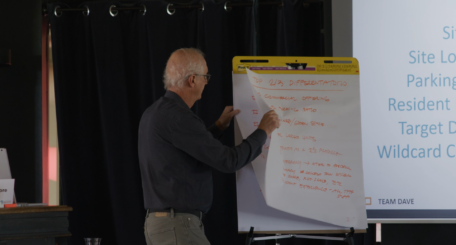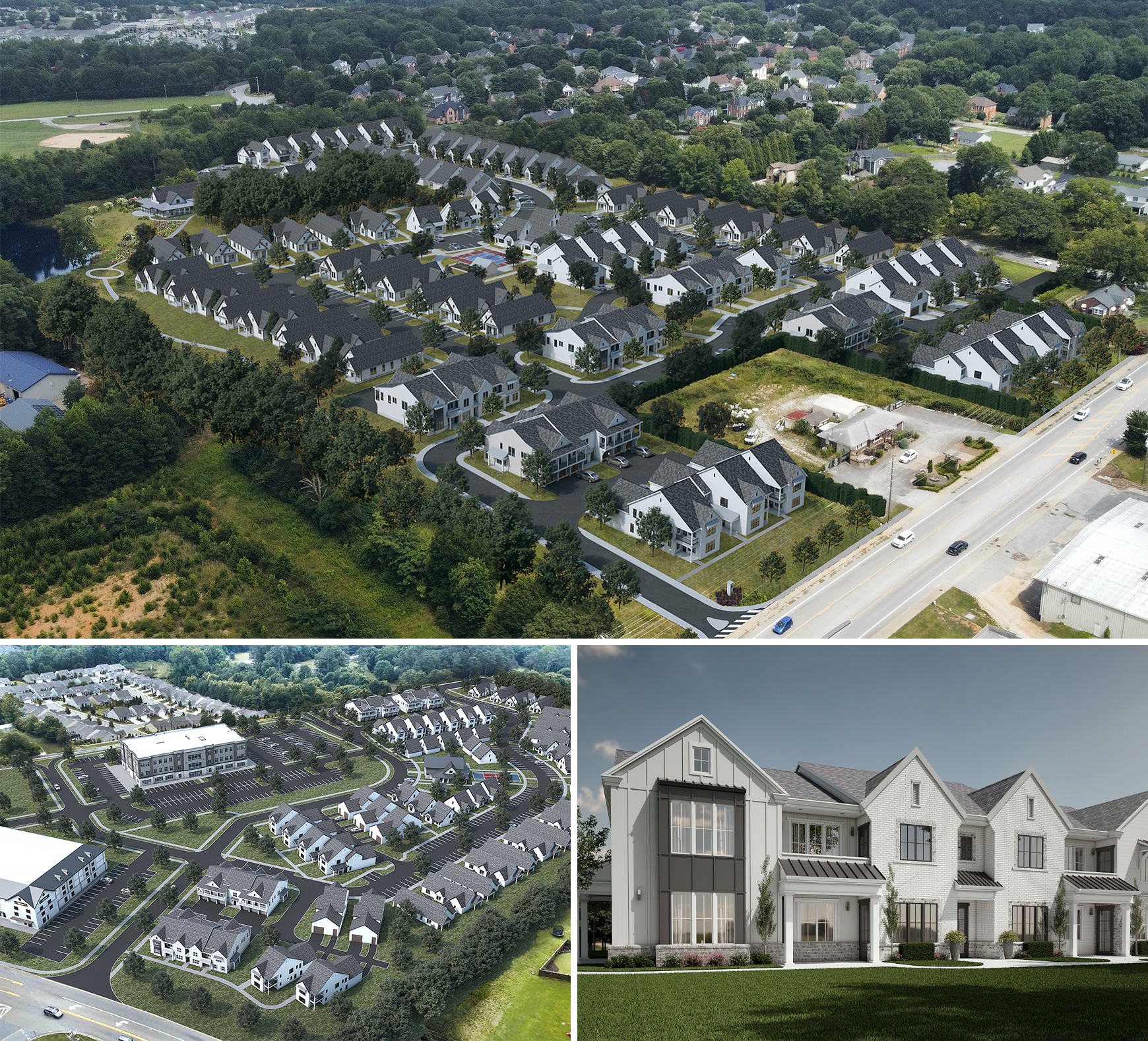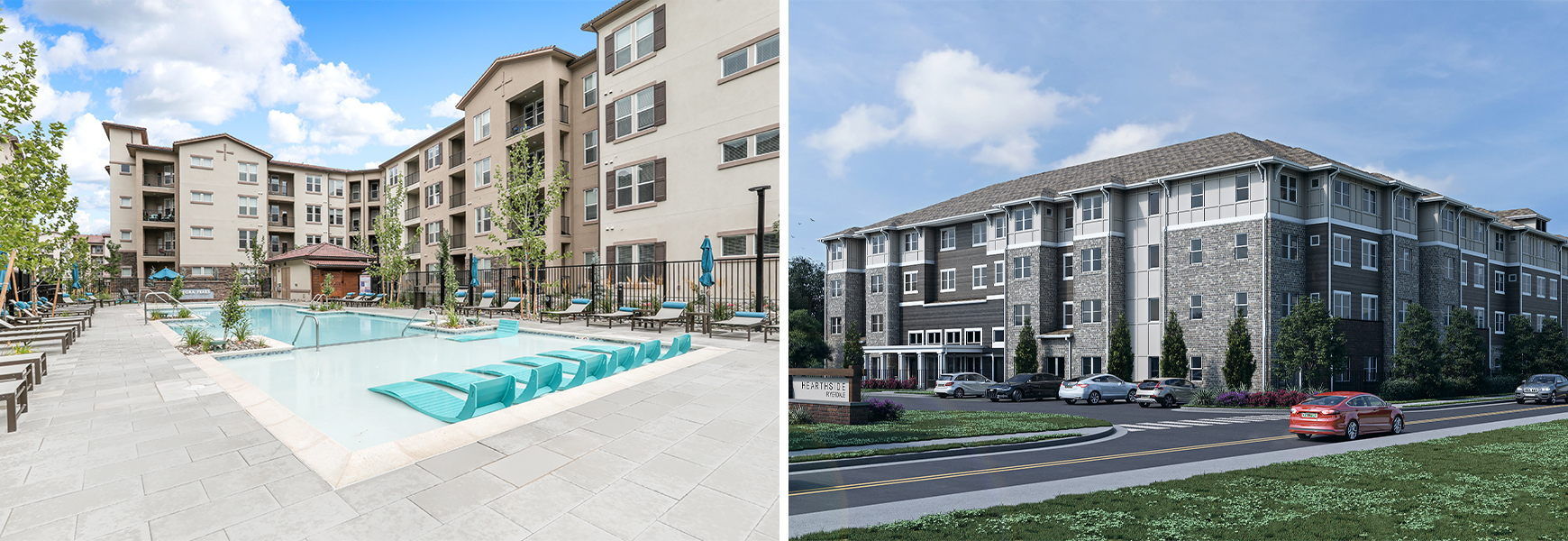Rethinking Multifamily Housing Through Real-World Constraints
In conversation with:
Joe Stryker, Principal, Southeast Region Director + Architect
Dave Williams, Partner

The most revealing design conversations happen when you remove the safety net of theoretical possibilities and force teams to grapple with actual site constraints, market realities, and financial limitations. At Experience Innovation 2025, two breakout groups tackled dramatically different multifamily scenarios that exposed both persistent challenges and unexpected opportunities for innovation.
Innovation from the Middle of the Fairway

Joe’s group received what appeared to be the most straightforward assignment: a 25-acre suburban site with conventional density and standard parking.
Rather than accepting a clean greenfield site, the team injected complexity by imagining topographical constraints and adjacency challenges. But the real curveball came from their market scenario: a 55+ active adult community where a major employer would guarantee 50% of leases if housing could accommodate its workforce.
The immediate reaction was confusion. How would retirees align with employment guarantees? But the team recognized this reflected actual market dynamics. Adult children taking jobs in new communities are increasingly bringing their parents along to be near grandchildren. The arrival of major employers sparks demand across diverse housing types, not only among direct employees.
Joe explained their pitch would draw from precedents in communities with major manufacturing facilities like Hyundai in Savannah, Kia in Columbus, and Volkswagen in Chattanooga. These industrial anchors create economic bases supporting diverse housing ecosystems.
“When the project feels too safe, you have to inject the innovation yourself.”
– Joe Stryker
But numbers alone wouldn’t sell this project. The team worked within strict requirements to respect the historic character of the community, emphasizing the importance of engaging local consultants and stakeholders early in the process.
Reimagining University-Adjacent Housing
Dave led a team with a more unconventional brief: a 5-acre fringe site near a university with no parking minimums and a target density of 25 units per acre. The team found clarity by reframing students moving away to school as their demographic anchor, later expanding to include university staff.
 The key insight was avoiding the trap of designing specialized student housing. As Dave explained, “It was an apartment project that students would likely be the first renters, but staff or anybody else might want to live near a university.” This approach opened possibilities for assistant professors, department administrators, or anyone wanting to rent near campus rather than committing to home ownership.
The key insight was avoiding the trap of designing specialized student housing. As Dave explained, “It was an apartment project that students would likely be the first renters, but staff or anybody else might want to live near a university.” This approach opened possibilities for assistant professors, department administrators, or anyone wanting to rent near campus rather than committing to home ownership.
The conversation revealed something crucial about where multifamily innovation actually happens. Dave observed that financing constraints limit differentiation in unit layouts: “There’s only so many ways you can do a two-bedroom apartment, and financing drives a lot of that. What’s left is the placemaking elements, which is mostly around amenities.”
“Innovation starts where the floor plans stop. Amenities and placemaking are where we truly shape how people live.”
– Dave Williams
Amenity programs can’t follow generic formulas. Suburban projects might need pools, game rooms, and dedicated remote work spaces. Urban projects should offer something distinct from what the surrounding neighborhood already provides. Context determines whether amenities add value or simply duplicate what residents can already access.
The Innovation That Actually Matters
When asked about what innovations in multifamily housing deserve attention, Dave highlighted the micro units that Stok is developing (Stok on Welton and Stok on Pearl) with Ori movable furniture systems. By engineering beds that rise to the ceiling when not in use, residents get 300 square feet that functions more like 500. A clever design with a direct response to affordability pressures without sacrificing livability.

The Hayloft communities (Big Creek, Bagwell Farms, and Holly Springs) represent another form of innovation that the market has validated. These build-to-rent projects are leasing rapidly and filling demand for the 55-plus market with variety in housing types and a walkable neighborhood feel. The innovation isn’t in radical reinvention but in thoughtfully responding to an underserved market segment with appropriate product.

Projects such as Integra Peaks at Damonte Ranch demonstrate traditional multifamily amenities executed at high quality, while Hearthside Riverdale operates within LIHTC constraints where state-mandated amenities limit flexibility due to cost restrictions.

Bridging the Communication Gap

Dave identified what may be the most significant barrier to better multifamily development: the relationship between developers and public officials.
“Early communication with the public sector is key, since hesitation on both sides can prevent the open dialogue needed for thoughtful higher-density housing.”
– Dave Williams
This mutual disconnect creates a dynamic where projects get designed in isolation and then presented to communities that feel like they’re having solutions imposed on them. The alternative requires developers taking risk by engaging earlier and public officials approaching those conversations with genuine openness.
Joe’s group demonstrated this principle in their presentation approach. Rather than just listing ideas, they spoke as though they had met with community stakeholders, building a sense of realism and narrative.
“You’re engaging the community before you make the pitch so it doesn’t come across as though you’re an outsider simply arriving with a plan.”
– Joe Stryker
The presentation felt more like a pitch to real constituents than a theoretical case study—a model for how staff can present more effectively in public or client-facing settings.
When Collaboration Meets Reality

Both breakout teams showed that when diverse voices—developers, designers, market analysts—actually collaborate on problems rather than defending predetermined positions, creative solutions emerge. It reflects a a deeper truth about how professionals engage with problems and enables conversations that wouldn’t otherwise happen. Now, the challenge is recreating those conditions outside structured events where the financial stakes and pressures are real.
Subscribe for the latest Experience Innovation 2025 insights.


 BACK TO BLOG
BACK TO BLOG